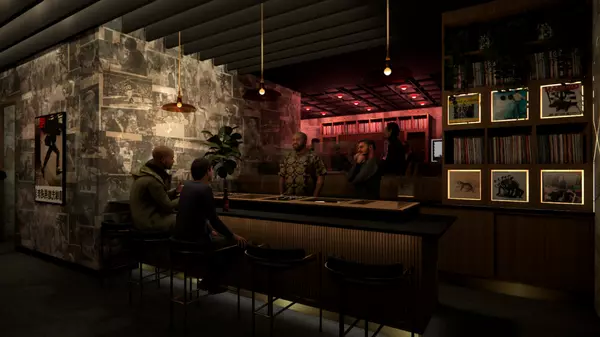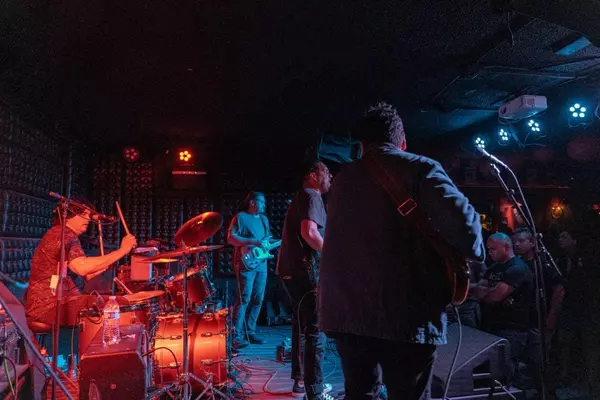
Dry January: Relapsing and Rebounding
This is the second in a four-part series. See the first piece here and check back next week for updates on SDM staff writer Danielle Allaire’s month-long sobriety quest.People touch your life for brief moments, with varying degrees of intensity—and sometimes the short-lived ones hit the hardest. Strangers morph into best friends. Lovers fade to strangers. Friends move on with the demands of their opposing lifestyle. Or they die from it. I recently found out a new friend had passed at the age of 42 after checking himself into rehab. He was my age. I listened to the voicemail he sent me on December 26. I’ll get back to him soon. I’m traveling. I’m busy. But here I sit with a ghost trapped in my phone, a constant reminder of my shortcomings as a friend; for not calling him back and, really, for not telling him to stop. I didn’t cry—I’m not sure why—but I was heartbroken for his friends and the community he had built. As I grieve him, his loss is serving as a reminder to love and take care of myself. And that’s what my Dry January is all about.January 9, 2025Dry January: An Unsolicited Sojourn in SobrietyRELATED ARTICLEThen comes January 8. I was feeling so proud that I had spent a whole week without alcohol for the first time in quite a while. I was waking up early. I was tackling my tasks with gusto. I had so much time to devote to myself and my new routine. But my pride was paused when I found out about the severity of the Palisades and Eaton fires. I lived in Los Angeles for nearly 20 years before my move to San Diego, from a freshman in college at Malibu’s Pepperdine University to becoming a bona fide adult attempting to live out her dreams in northeast LA’s Highland Park, just southwest of Altadena. My heart is utterly shattered for my former home, my friends who have lost it all, and the city’s history that has been scorched. This ache for Angelenos is compounded by the fact that Lahaina is my hometown. I’ve been through this before.Anybody else need a drink?Dr. Katarina Thatcher, an addiction specialist and therapist at Monima Wellness Center, San Diego’s first female-only therapeutic recovery center, notes that “a lot of the times, I noticed that people typically start getting into a maladaptive relationship with substances when their mental health is on the decline. And, to be honest, substances work. That’s part of the reason that we gravitate to them.” There’s the rub. Depending on the severity of one’s use, Thatcher cautions that when choosing sobriety “it’s really important that you get a health care team involved … because it can get very scary and people can get very sick.”Overall, she says, “I think what is important for people to realize is when you’re challenging your relationship with a substance, [ask] what function does it serve? Or, what is it that keeps me coming back to this thing?” Most of us know what we’re numbing but naming it out loud can be the hardest thing to do.But here I sit with a ghost trapped in my phone, a constant reminder of my shortcomings as a friendMy sister invited me out to dinner on January 9 for my niece’s birthday. I knew this would be the hardest hurdle I’ve faced. My sister and I grew up in restaurants together, always surrounded by the normalcy of drinking. Cocktails to start and a bottle of wine (or two) to finish was the liquid cadence of every meal. My sister is my best friend—and neither of us can deny an Aperol Spritz. The co-signing on questionable behavior is real. She texts me the wine list as I’m driving to the restaurant. I walk into the clamor of kids and the din of the other diners. She’s sitting there smiling through the cacophony with a Sauvignon Blanc. I know I don’t have to drink. I know she’ll be fine if I don’t. She won’t shame me. She won’t get sad. But I feel the urge to keep up appearances. This is how we dine.Dr. Thatcher calls out some of the main triggers for people on their sober curious quest. “My mind goes to people, places and things,” she says. “If you know maybe you’re going to be in a situation where you’re going to be really uncomfortable, or you know that there’s going to be a lot of drinking, and maybe you’re fresh on your recovery journey or your abstinence journey, maybe it’s best to sit that one out.”But, again, there I sit. The waitress approaches and spews that baiting line I myself have said a thousand times, “Anything to drink?” I spy the happy hour menu and spot a Chardonnay. Despite my better wine knowledge, it’s my kryptonite. I order the $6 glass and know it’s going to be horrible.November 21, 202413 Alcohol-Free Things to Do in San Diego at NightRELATED ARTICLEThe waitress comes back, delivering the chintzy glass full to the brim. I think of my friend who’s gone. I think of the LA that’s gone. I think of my progress, which is seconds away from being gone. Surely one little glass won’t set me spiraling. I take a sip. Gasoline with notes of pear. This pick wasn’t worth breaking my fast, but I’m heartened by the fact that I don’t finish it. Maybe because it’s terrible or maybe because I know better.Dr. Thatcher emphasizes that “relapse is a part of recovery, which I think can be really daunting and maybe even discouraging for folks. But also perfectionism, or the idea of doing things perfectly, is also damaging to mental health. So, if you do relapse, or if you do have those sips, and you’re like ‘That’s not for me.’ Then, okay, there’s no need to beat yourself up over it.”Though I let myself slip, I got right back on the horse and haven’t touched a drop since. Am I disappointed with myself? A little. But this experience proves that I can allow alcohol in when I want and shut it off when I want. I think.Next week, we give our state’s latest adult export a shot and go Cali-Sober.The post Dry January: Relapsing and Rebounding appeared first on San Diego Magazine.

Will Los Angeles wildfires dent California incomes, No. 1 in US?
How will the California economy handle the Los Angeles wildfires’ early repair estimates running between $50 billion to $150 billion?Well, much of those rebuilding funds will be from insurance. Other payments will be covered by various governments and their assistance programs. There will be charity, too.And the remaining outlays will come from the nation’s largest flow of personal income.My trusty spreadsheet looked at personal income states for the 50 states as tallied by the U.S. Bureau of Economic Analysis. This quarterly stat adds up what’s paid to residents – from paychecks to investment proceeds to government benefits from welfare to Social Security.California’s personal income ran at a $3.39 trillion annual pace in the year ended September 2024. That’s No. 1 among the states and 14% of the nation’s $24.74 trillion tally. The Golden State’s economic heft will significantly mitigate the painful business expenses of rebuilding.Only three other states have trillion-dollar personal incomes: Texas, with $2.14 trillion, New York, with $1.71 trillion, and Florida, with $1.65 trillion.Growth pictureThis California cash flow is expanding at a nationally leading pace.Statewide per-capita income – that’s all payments divided by the population – grew at an average of 6.7% annually in the four quarters through September 2024. That’s No. 1 among the states and easily tops the 4.7% national pace.Following the Golden State was Hawaii, up 6.5%, Vermont and New York at 5.7%, and Mississippi, up 5.5%U.S. laggards were North Dakota, down 1%, Nebraska, up 1.3%, Iowa and South Dakota, up 1.5%, and Montana, up 3.1%.And California’s major economic rivals? Texas was No. 43 at 3.7%, and Florida was No. 39 at 4%.DetailsCalifornia’s notable advance pushed its per-capita income to $85,300 as of September 2024 – the fourth-highest among the states and 18% higher than the nation’s $72,400.No. 1 was Massachusetts at $94,400, followed by Connecticut at $93,500 and New York at $86,200. After California was New Jersey and Wyoming at $84,900.Mississippi had the lowest income, at $51,500, West Virginia at $54,900, Alabama at $56,200, New Mexico at $57,400, and Kentucky at $57,500.Texas was No. 26 at $68,200 while Florida was No. 19 at $70,900.The spinWe often wonder who can afford California living – or this month, what entity could absorb a humungous wildfire repair bill.Well, these income yardsticks suggest there have been numerous Californians with robust increases in what they get paid, noting these stats track wealth created inside and outside the traditional workplace.This collective upswing is not a one-shot wonder. California’s per-capita income expanded at an average 5.7% annual rate in the previous four quarters, the year ending September 2023, No. 8 among the states.Equally impressive is that California’s growth improved by 1 percentage point over these four quarter periods, the seventh-best performance among the states.By the way, national income growth in the same period cooled by 0.3 percentage points from a 5% pace.Jonathan Lansner is the business columnist for the Southern California News Group. He can be reached at jlansner@scng.com

Volunteer Diaries: Father Joe’s Villages
For nearly 17 years, Jeff Javier, his wife Jina, and their two children have been at the heart of Father Joe’s Villages, San Diego’s largest homeless services provider, as dedicated volunteers. As the organization celebrates its 75th anniversary in 2025, its story embodies the compassion and commitment that make Father Joe’s Villages a lifeline for more than 2,500 people nightly. From providing shelter and healthcare to offering job training and therapeutic childcare, the impact of this mission is undeniable. With nearly 274,000 shelter bed nights and over 300 permanent housing transitions recorded in 2024 alone, it’s a community-driven effort redefining hope. We caught up with Javier to discuss what it’s like to volunteer with the organization.What made you want to volunteer for this organization?Jeff Javier (JJ): I started volunteering when my wife was pregnant with our daughter in 2008. I saw a father in a busy intersection on Mira Mesa Blvd holding a sign that said he needed food for himself, his wife, and his kids. I felt terrible that he was in his situation, which made me want to help. I gave him a gift card but knew that wasn’t the solution. So that’s when I contacted Father Joe’s Village.What do your volunteer duties entail?JJ: I greet and welcome each guest, serve food at my assigned table, clean up after the guests, hand out drinks, and improve a stranger’s day. View this post on Instagram A post shared by Father Joe's Villages (@fatherjoesvillages)Can you describe your favorite or most memorable experience while volunteering?JJ: My most memorable volunteering experience happened at a July 4 special meal. There was a large group of military volunteers. I immediately recognized one of the women as a former fifth grade student of mine whom I hadn’t seen in maybe 15 years. We exchanged life updates, and I expressed my congratulations on her life path.Any advice for someone considering volunteering as a way to get involved with their community?JJ: My advice is to sign up and experience the feeling of helping hundreds of strangers have a better day. The appreciation the guests give in return is priceless.The post Volunteer Diaries: Father Joe’s Villages appeared first on San Diego Magazine.
Categories
Recent Posts











